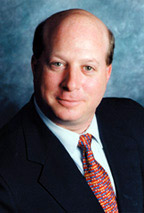ocusing on core competencies is a catch phrase that is heard more frequently than ever these days. And for good reason. Corporations across all avenues are stretched to the max, and focusing on projects that are not directly related to a department’s primary functions can be daunting. Today, many corporations are understaffed because of the downsizing and rightsizing that occurred in the 1980s and 1990s. Add to that the fact that most in-house corporate real estate professionals are juggling scores of different balls, and a corporation could find itself in a real bind when it comes time to dive into a site selection project.

|
|
Gregg Wassmansdorf, Vice President and Site Selection Practice Leader at Colliers International |
In short, the site selection process can be bewildering, and even in-house experts may need an extension of their own staff. Gregg Wassmansdorf, Vice President and Site Selection Practice Leader at Colliers International, says that when he and his team are hired, they provide a “staff augmentation service,” often
working with the mergers and acquisition group, the real estate department, or even the CFO’s office. With revenue exceeding US$1 billion worldwide, Colliers International is one of the leading commercial real estate organizations in the world and has offices in 50 countries on six continents.
Wassmansdorf says that, in the current economic climate, corporations are relocating and choosing new facility locations for three primary reasons: They are moving towards lower-cost geographies; towards a strategic market that has a labor force that is integral to their business; or towards a market that offers new sales opportunities.
The GVA Worldwide Industrial Practice Group in Toronto offers a fully-integrated set of services to help clients in the site selection process and to help manage real estate portfolios more effectively. According to Rob Renaud, Co-Chair of the GVA Worldwide Industrial Practice Group, globalization has caused property data to become even more important for in-house decision makers because of increased accountability and costs. Clients are seeking “best-in-class partners to help release those stresses because they don’t have the internal resources they once had,” he notes. “We are hired to fill that void.”
Clients need end-to-end solutions. Renaud and his team provide their clients with appropriate guidance to logical, defensible, and successful location decisions, he says. GVA Worldwide is a global real estate services firm with offices in 120 cities and 35 countries.
“Our clients come to us because they want us to resolve an issue — such as shutting down a plant in one country, then figuring out where to go from there — and help them find a new location,” Renaud explains. “We provide guidance to make sure that the corporate location decision is aligned with the overall business decisions. And, our guidance and expertise all must be bundled and packaged so that the client can report to the board why they chose this location. It’s a big and costly decision and it must make sense.”
Wassmansdorf says that his Colliers’ team members also provide their clients with solid evidence.
“There is a strict methodology and process that we follow with each project and we can prove it,” he says. “Ultimately, our clients must go back and support their decision in front of the board or in front of shareholders. They must be very clear on why they are moving to a certain location.
“In fact,” he continues, “the Colliers trademark is ‘Before you say where, know why.’ It’s a simple message, really, but in our brokerage practice we have seen too many companies who come to us and say, ‘Help us dispose of this property.’ Often our first question is, ‘How did you end up there in the first place?’ “

|
|
Rob Renaud, Co-Chair of the GVA Worldwide Industrial Practice Group in Toronto |
Scott Panzer, Executive Vice President and Managing Principal, Strategic Consulting Group of New York, N.Y.-based Newmark, one of the largest independent real estate service providers based in the United States, says that the biggest change he has seen in the site selection process over the past decade is how he and his team work with clients – which, in a word, is “turnkey.”
“The level of service we are asked to provide has expanded from a decade ago,” remarks Panzer. “Most of the work 10 years ago was consulting tied to financial analysis support and basic transactional negotiations. Today our projects are more turnkey, as we are also doing project management and construction management, and relocation and move coordination.”
Why the change? According to Panzer, most corporations have cut their facility staffs to the bone, viewing in-house real estate staff as a cost center. So it is often the first to be slashed when a company is looking to save cash. Headquartered in Manhattan, and with offices throughout the world employing nearly 700 people, Newmark has created a global platform from which to serve its growing list of corporate clients. Annually, the firm completes nearly 20 million sq. ft. of transactions, valued at over $6.5 billion in total consideration.
GVA Worldwide’s Renaud says that in addition to each real estate service provider taking on more expansive roles, firms are increasingly collaborating with a number of vendors – such as lawyers and development companies —to smooth out the process.Renaud cites the case of a major compensation firm (which was not a GVA Worldwide client) that was looking to set up a regional office in a major Canadian city. After determining that Calgary was the most opportune location, the firm did all due diligence and even went so far as to set a timeline and hire a staff. There was just one little problem: the firm was unable to find any real estate in the city.

|
|
Scott Panzer, Executive Vice President and Managing Principal, Strategic Consulting Group of New York |
“Increased collaboration between all parties involved in a major site selection project is key to everyone’s success, particularly the client’s!” remarks Renaud.
“Location, location, location” will always be the industry’s three magic words, But Panzer says new words can join the mantra: cost, cost, cost, and flexibility, flexibility, flexibility.
“Location and cost are always key factors in the site selection process, but increasingly, companies must be flexible in their ability to grow and to retrench if their business model changes, and flexible enough to adapt an existing facility to alternate uses. Likewise, as site selection experts, we all must be as flexible and adaptable,” concludes Panzer.
Colliers’ Wassmansdorf says that, while predicting the future is the million dollar question, he expects in the medium term to see the U.S. shift away from pure cost containment towards growth.
“Over the last few years, there has been much focus on how to reduce costs. This must continue, but with the election behind us, a lower U.S. dollar, and several other economic changes, I expect to see a shift in the near future toward implementing multi-facility rollouts and more job creation,” Wassmansdorf notes.
Whatever the future may bring, it’s a sure bet that the top real estate service providers will be here to guide you through every complicated step of the site selection process.